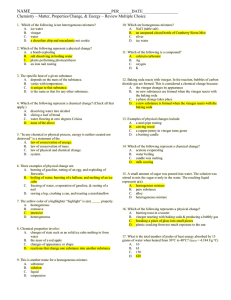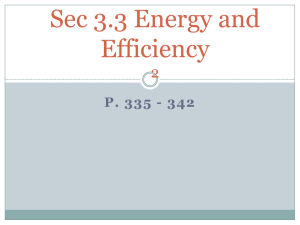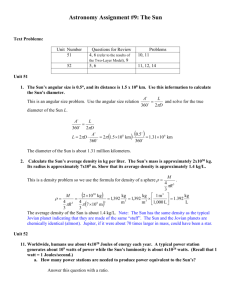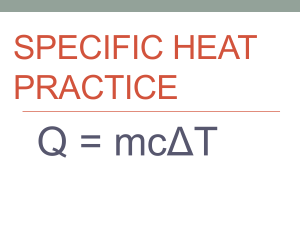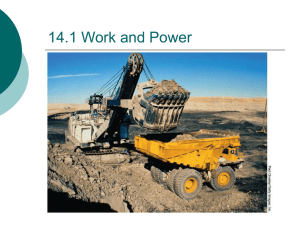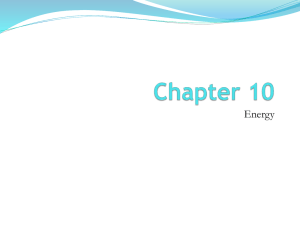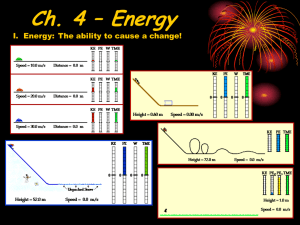NAME PER DATE_________________ Chemistry – Matter
advertisement
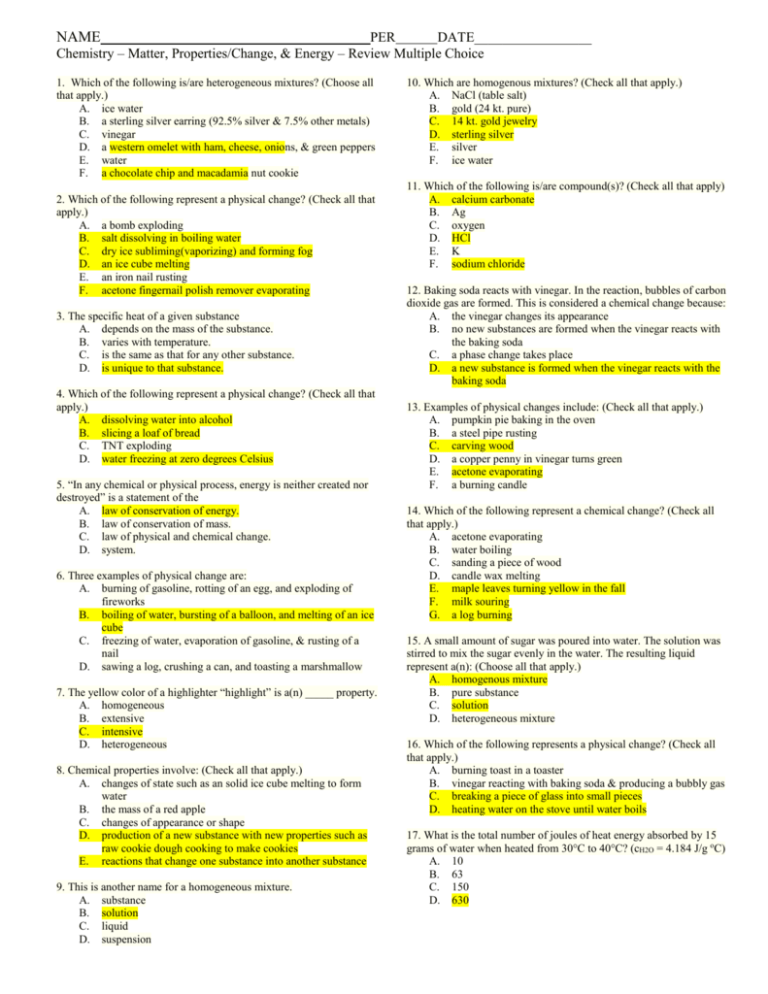
NAME PER DATE_________________ Chemistry – Matter, Properties/Change, & Energy – Review Multiple Choice 1. Which of the following is/are heterogeneous mixtures? (Choose all that apply.) A. ice water B. a sterling silver earring (92.5% silver & 7.5% other metals) C. vinegar D. a western omelet with ham, cheese, onions, & green peppers E. water F. a chocolate chip and macadamia nut cookie 2. Which of the following represent a physical change? (Check all that apply.) A. a bomb exploding B. salt dissolving in boiling water C. dry ice subliming(vaporizing) and forming fog D. an ice cube melting E. an iron nail rusting F. acetone fingernail polish remover evaporating 3. The specific heat of a given substance A. depends on the mass of the substance. B. varies with temperature. C. is the same as that for any other substance. D. is unique to that substance. 4. Which of the following represent a physical change? (Check all that apply.) A. dissolving water into alcohol B. slicing a loaf of bread C. TNT exploding D. water freezing at zero degrees Celsius 5. “In any chemical or physical process, energy is neither created nor destroyed” is a statement of the A. law of conservation of energy. B. law of conservation of mass. C. law of physical and chemical change. D. system. 6. Three examples of physical change are: A. burning of gasoline, rotting of an egg, and exploding of fireworks B. boiling of water, bursting of a balloon, and melting of an ice cube C. freezing of water, evaporation of gasoline, & rusting of a nail D. sawing a log, crushing a can, and toasting a marshmallow 7. The yellow color of a highlighter “highlight” is a(n) _____ property. A. homogeneous B. extensive C. intensive D. heterogeneous 8. Chemical properties involve: (Check all that apply.) A. changes of state such as an solid ice cube melting to form water B. the mass of a red apple C. changes of appearance or shape D. production of a new substance with new properties such as raw cookie dough cooking to make cookies E. reactions that change one substance into another substance 9. This is another name for a homogeneous mixture. A. substance B. solution C. liquid D. suspension 10. Which are homogenous mixtures? (Check all that apply.) A. NaCl (table salt) B. gold (24 kt. pure) C. 14 kt. gold jewelry D. sterling silver E. silver F. ice water 11. Which of the following is/are compound(s)? (Check all that apply) A. calcium carbonate B. Ag C. oxygen D. HCl E. K F. sodium chloride 12. Baking soda reacts with vinegar. In the reaction, bubbles of carbon dioxide gas are formed. This is considered a chemical change because: A. the vinegar changes its appearance B. no new substances are formed when the vinegar reacts with the baking soda C. a phase change takes place D. a new substance is formed when the vinegar reacts with the baking soda 13. Examples of physical changes include: (Check all that apply.) A. pumpkin pie baking in the oven B. a steel pipe rusting C. carving wood D. a copper penny in vinegar turns green E. acetone evaporating F. a burning candle 14. Which of the following represent a chemical change? (Check all that apply.) A. acetone evaporating B. water boiling C. sanding a piece of wood D. candle wax melting E. maple leaves turning yellow in the fall F. milk souring G. a log burning 15. A small amount of sugar was poured into water. The solution was stirred to mix the sugar evenly in the water. The resulting liquid represent a(n): (Choose all that apply.) A. homogenous mixture B. pure substance C. solution D. heterogeneous mixture 16. Which of the following represents a physical change? (Check all that apply.) A. burning toast in a toaster B. vinegar reacting with baking soda & producing a bubbly gas C. breaking a piece of glass into small pieces D. heating water on the stove until water boils 17. What is the total number of joules of heat energy absorbed by 15 grams of water when heated from 30°C to 40°C? (cH2O = 4.184 J/g oC) A. 10 B. 63 C. 150 D. 630 18. A compound differs from a mixture in that a compound always has A. a homogeneous composition B. a maximum of two components C. a minimum of three components D. a heterogeneous composition 26. A student using a Styrofoam cup as a calorimeter added a piece of metal to distilled water and stirred the mixture. (cH2O = 4.184 J/g oC) 1) The initial temperature of 50.0 g of water was 25°C. 2) The initial temperature of 20.0 g of metal was 100 °C. 3) The final temperature of the water and metal was 32.0° C 19. Which substance cannot be decomposed into simpler substances? A. glucose B. aluminum C. table salt D. hydrochloric acid Using the data above (1, 2, & 3), which of the following statements correctly describes the heat flow in joules [Heat Flow is how the heat is transferred from watermetal and/or metalwater]? A. The water lost 5690 joules of heat and the metal gained 5690 joules of heat. B. The water lost 1500 joules of heat and the metal gained 1500 joules of heat. C. The water gained 590 joules of heat and the metal lost 590 joules of heat. D. The water gained 1500 joules of heat and the metal lost 1500 joules of heat. 20. How many joules are equivalent to 35 kilojoules? A. 0.035 joules B. 0.35 joules C. 3,500 joules D. 35,000 joules 21. Under the same conditions of temperature and pressure, a liquid differs from a gas because the particles of the liquid A. are in constant straight-line motion B. take the shape of the container they occupy C. have no regular arrangement D. have stronger forces of attraction between them 22. Which statement describes a chemical property? A. Its crystals are a metallic gray. B. It dissolves in alcohol. C. It forms a violet-colored gas. D. It reacts with hydrogen to form a gas. 23. What is the product of (52.6 cm) x (1.214 cm) expressed to the correct number of significant figures? A. 64 cm2 B. 63.9 cm2 C. 63.86 cm2 D. 63.8564 cm2 24. Which measurement contains three significant figures? A. 0.08 cm B. 0.080 cm C. 800 cm D. 8.08 cm 25. A student investigated the physical and chemical properties of a sample of unknown gas and then investigated the gas. Which statement represents a conclusion rather than an experimental observation? A. The gas is colorless. B. The gas is carbon dioxide. C. When the gas is bubbled in limewater [Ca(OH)2 in H2O], the liquid becomes cloudy. D. When placed in the gas, a flaming splint stops burning. 27. What is the sum of 6.6412 g + 12.85 + 0.046 g + 3.48 g? Expressed to the correct number of significant figures A. 23 g B. 23.0 g C. 23.017 g D. 23.02 g 28. What occurs as potassium nitrate is dissolved in a beaker of water, indicating that the process is endothermic? A. The temperature of the solution decreases. B. The temperature of the solution increases. C. The solution changes color. D. The solution gives off a gas. 29. Salt A and salt B were dissolved separately in 100 mL beakers of water. The water temperatures were measured and recorded as shown in the table below: Salt A: initial water temp. 25.1°C final water temp. 30.2°C Salt B: initial water temp. 25.1°C final water temp. 20.0°C Which statement below is a correct interpretation of the data above? A. The dissolving of only salt A was endothermic. B. The dissolving of only salt B was exothermic C. The dissolving of both salt A and salt B was endothermic. D. The dissolving of salt A was exothermic and the dissolving of salt B was endothermic. 30. A solid is dissolved in a beaker of water. Which observation suggests that the process is endothermic? A. The solution gives off a gas. B. The solution changes color. C. The temperature of the solution decreases. D. The temperature of the solution increases.
